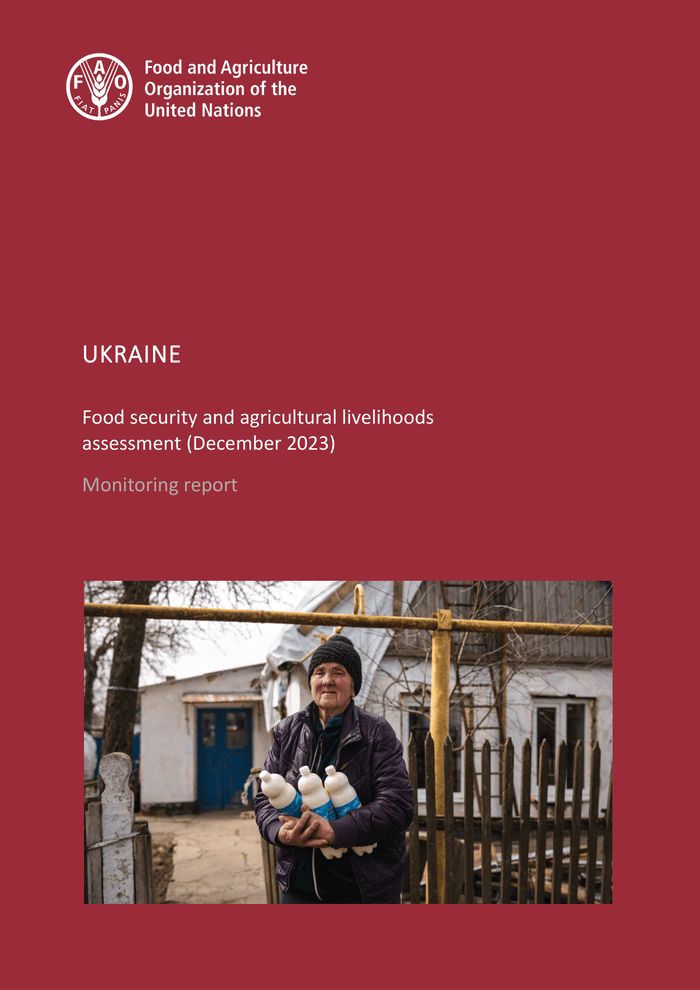Attachments
Key highlights
• The overall prevalence of moderate or severe recent food insecurity (RFI) based on the Food Insecurity Experience Scale (FIES) in the Government of Ukraine's controlled areas was 15 percent. The prevalence of food insecurity was higher in frontline provinces, internally displaced people (IDPs), female-headed households, households with at least one vulnerable person, and households that had experienced a shock.
• Across all three key food security indicators collected – Household Diet Diversity Score (HDDS), FIES and Livelihood Coping Strategies Index (LCSI) – households engaged in agriculture and/or deriving income from agricultural production had better food security outcomes. These differences were statistically significant.
• On average, 48% of households rely on income from public and private sector work, and 45% rely on non-employment related income (pensions, charity, humanitarian aid/assistance from government, household remittances). More than 50% of households report having no secondary income.
• In the three months preceding the survey, one in five Ukrainian households reported a decrease in their main income compared to the previous year. This trend is particularly pronounced among agricultural households, with half of households that rely on agricultural production as their main source of income experiencing a decrease in income. Moreover, more than one-third of households that rely on agricultural production or labor reported a decrease in income.
• 28% of surveyed households reported experiencing at least one shock affecting their income or access to food in the three months prior to the survey. This rate reached 32% in frontline states. All frontline states reported violence/conflict as the most frequent shock.
• Nearly seven in ten Ukrainian households implemented a range of coping actions to access resources that would help them meet their immediate food and basic needs. 50% of households adopted crisis (42%) or emergency (8%) coping strategies due to lack of food or money. The most common coping strategies adopted were using savings and reducing health care costs.
• 43% of crop-producing households and 17% of livestock-raising households reported difficulties in production. Commonly cited challenges included lack of water or irrigation facilities, difficulty accessing inputs (fertilizer, seeds, pesticides), pest/disease infestations, purchasing feed, and sick or injured livestock.



